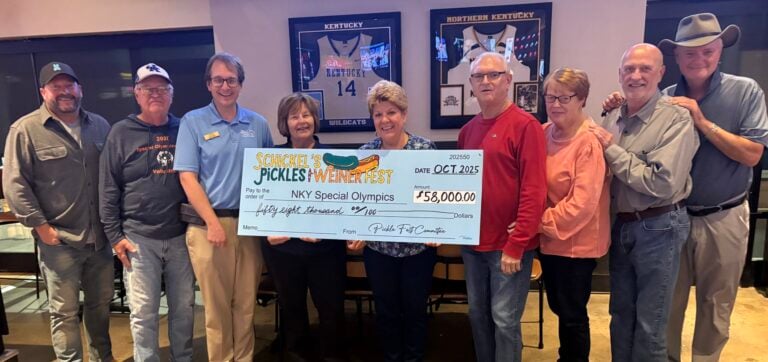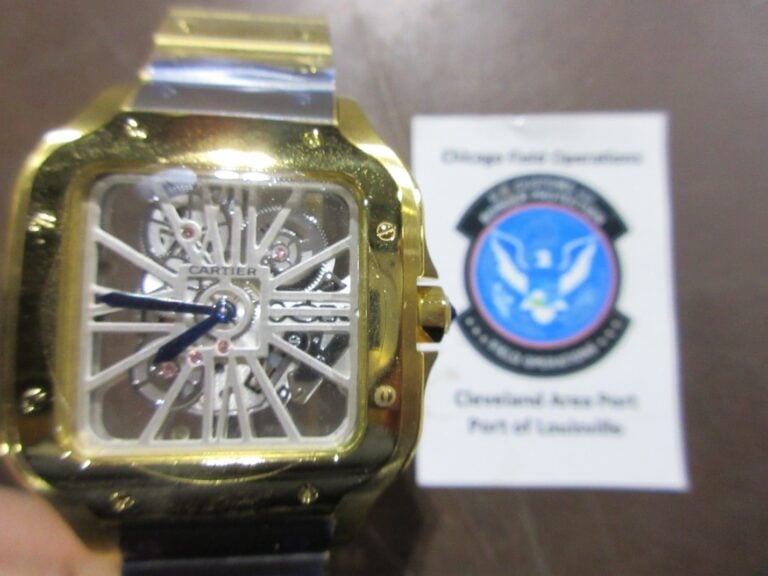By Liane Crossley
Special to NKyTribune
Thoroughbred racehorse Koda Chrome might not know he is special but his people and admirers certainly do. The three-year-old colt gained plenty of attention when he made his career debut at Belterra Park near Cincinnati on May 7 and garnered further admiration from subsequent publicity.
“The greatest reaction was the crowd,” Koda Chrome’s owner and breeder Karen Babcock said. “Cameras were going off and people around was asking if he was a racehorse or lead pony.”
With markings reminiscent of a Western scene, Koda Chrome looked like he might have taken a wrong turn on his way from the barn. While patchwork horses are regularly ridden as companions or lead ponies at the track, flamboyant bursts of white are a rarity among Thoroughbreds.

Koda Chrome has enough bling for certification with the American Paint Horse Association but his official Thoroughbred color is his prominent shade of dark bay.
The Jockey Club registry does not recognize paint, often called pinto, as color so patterned Thoroughbreds are known by their main hue. His catchy name reflects photography terminology and equine slang for abundance of white often referred to as chrome.
With a third-place effort in his debut, Koda Chrome continues to fulfill Babcock’s dream. Babcock and trainer Tom Drury Jr. are biding their time while mapping out a strategy for Koda Chrome’s racing career. The ultimate goal is winning at least one race but Koda Chrome has plenty of options away from the track.
“I am not in a hurry, but we obviously want him to win,” she said.
Long-range plans call for Koda Chrome to compete at horse shows and then be bred to mares whose owners seek versatile offspring with athleticism, charm and possibly exceptional decoration.
Coloring her world
Babcock has a keen interest in raising Thoroughbreds and Thoroughbred crosses with unusual color at her 28-acre Echo Hill Farm in Louisville.
She was focused on producing golden Thoroughbreds that could be registered as palomino when she discovered a website devoted to Thoroughbreds of rare pigmentation. The site pictured the breeding stallion Blue Eyed Streaker, a jigsaw puzzle of light and dark punctuated by azure peepers.
“I was captivated,” Babcock said. “I wanted to breed mares to him.”
About eight years ago, she purchased the stallion and had him shipped from Texas where he had been remarkably unremarkable as a racer from 1995 to ’99. In 25 low level starts, Blue Eyed Streaker’s had only a third-place finish to his credit. In the wooded surroundings of Echo Hill, Blue Eyed Streaker blossomed into a champion in the eyes of the Babcock family. Babcock marvels at his docile nature akin to that of a family pet.
“He’s really cool for a 22-year-old stallion,” she said. “My children (ages nine and 13) can handle him.”
Babcock considers much more than ornamentation when planning future generations. She wants horses that are easy going, sturdy, athletic and in-demand and she sells only to suitable homes. She has a self-described “one in, one out” rule of thumb that allows her to get a new addition only after one is sold so that she does not accumulate too many horses.
Her own mares produce only one or two foals each year but she allows others to breed to Blue Eyed Streaker. Some of Blue Eyed Streaker’s mates are non-Thoroughbreds that will produce “sport horses” with an affinity for jumping and pleasure riding.
“But I always said if one had the ability and desire to become a racehorse, we would try that, too,” she said.
Under Babcock’s tenure, Blue Eyed Streaker has begotten progeny with white faces, splashes of white and blue eyes but no offspring as distinctive as Koda Chrome.
“You never know what you are going to get with this color gene,” she said.
She said although replication is random, chances of abundant markings can increase depending on Blue Eyed Streaker’s mate. Koda Chrome’s dam A Beauty in Black, a two-time winner at Arizona tracks, is dark bay with white socks at all four ankles and a white stripe down her face. Babcock steers clear of plain brown mares because they are unlikely to procreate the coveted tinting.
“We’ve been trying to reproduce Blue Eyed Streaker’s loud 50-50 pattern since we got him,” she said.
For more information about Echo Hill Farm, visit this site.
Liane Crossley is a Lexington-based freelance writer.





















